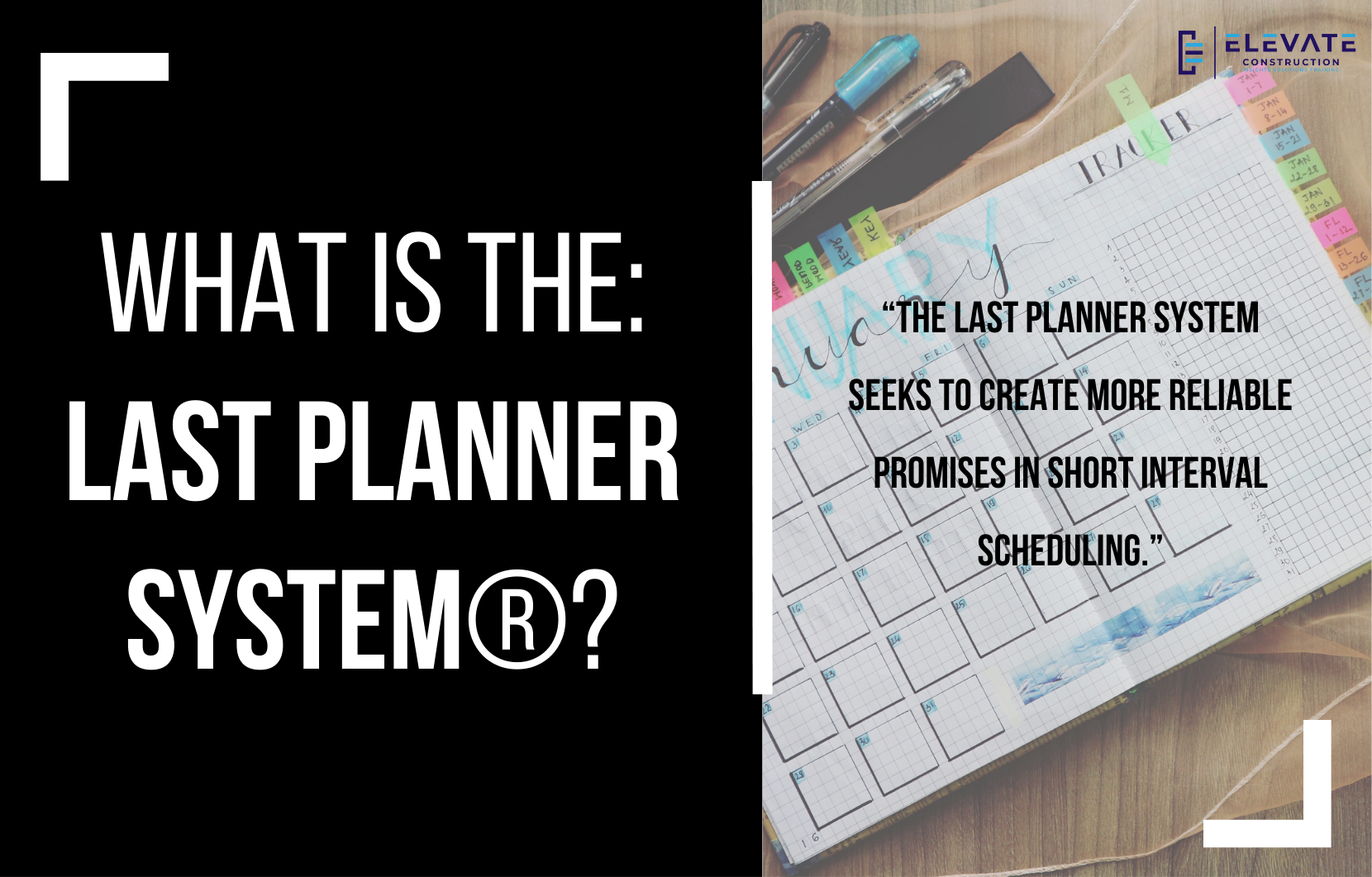Introduction: Welcome to our blog post where we delve into the intricacies of the Last Planner System, an innovative approach to collaborative planning in the construction industry. If you’ve heard the term “lean construction” or are keen on avoiding delays in your projects, you’re in the right place. By the end of this read, you’ll gain a high-level understanding of what the Last Planner System is and how it can revolutionize your construction planning.
What Is the Last Planner System? At its core, the Last Planner System is a collaborative planning methodology that actively involves last planners, often the foremen or superintendents, in the construction process. The system emphasizes communication, collaboration, and commitment, aiming to establish a culture where the entire team works as an integrated unit. By engaging experts on the ground, the Last Planner System seeks to create more reliable promises in short interval scheduling.
Components of the Last Planner System:
- Master Schedule: The master schedule identifies the overall project duration and milestones. It serves as a crucial tool to determine project timelines and can be created using Critical Path Method (CPM) or tact planning.
- Pull Plan: In the pull plan, last planners collaborate to create a sequence of activities backward, ensuring the right sequence and readiness for each task. This sequence is then integrated into the master schedule or other short interval schedules.
- Look-Ahead Plan: The six-week make-ready look-ahead identifies activities within the schedule that need preparation. It focuses on ensuring that each activity has the necessary manpower, materials, tools, equipment, and permissions to proceed, effectively identifying potential roadblocks.
- Weekly Work Plan: The weekly work plan involves last planners committing to specific activities and durations, promoting a high level of commitment to the plan. The objective is to get a 100% commitment from all trades through collaborative coordination.
- Day Plan: The day plan huddle occurs daily, allowing the team to craft a plan for the day, ensuring successful execution of the portions outlined in the weekly work plan.
- Percent Promises Complete: This metric calculates the percentage of promises kept, providing insights into project performance. Projects with a Percent Promises Complete score over 80% historically stay on or under budget and time.
When and How to Implement the Last Planner System: Meetings play a pivotal role in the Last Planner System, with at least two standard gatherings: the weekly work planning meeting and the daily huddle. The weekly work planning meeting involves coordinating with last planners to create the weekly work plan and make-ready look-ahead. The daily huddle, held every day, focuses on executing the day plan collaboratively.
Four Steps to Implementing Builder’s Lean:
- Move to a daily huddle.
- Visualize planning by using visual formats.
- Prioritize roadblock removal in meetings.
- Implement the entire Last Planner System as outlined.
Conclusion: Implementing the Last Planner System can significantly enhance project efficiency and success rates. Engage in huddles, visualize your plans, focus on roadblock removal, and take steps to understand and implement this collaborative planning system. For more in-depth insights, check out resources such as “The Lean Builder” book and the Lean Builder blog.
Embark on this journey of improved construction planning, and witness the transformative impact of the Last Planner System on your projects. Subscribe to our channel for more informative content and resources to elevate your construction practices.
If you want to learn more we have:
-Takt Virtual Training: (Click here)
-Check out our Youtube channel for more info: (Click here)
-Listen to the Elevate Construction podcast: (Click here)
-Check out our training programs and certifications: (Click here)
-The Takt Book: (Click here)
Discover Jason’s Expertise:
Meet Jason Schroeder, the driving force behind Elevate Construction IST. As the company’s owner and principal consultant, he’s dedicated to taking construction to new heights. With a wealth of industry experience, he’s crafted the Field Engineer Boot Camp and Superintendent Boot Camp – intensive training programs engineered to cultivate top-tier leaders capable of steering their teams towards success. Jason’s vision? To expand his training initiatives across the nation, empowering construction firms to soar to unprecedented levels of excellence.
On we go!


